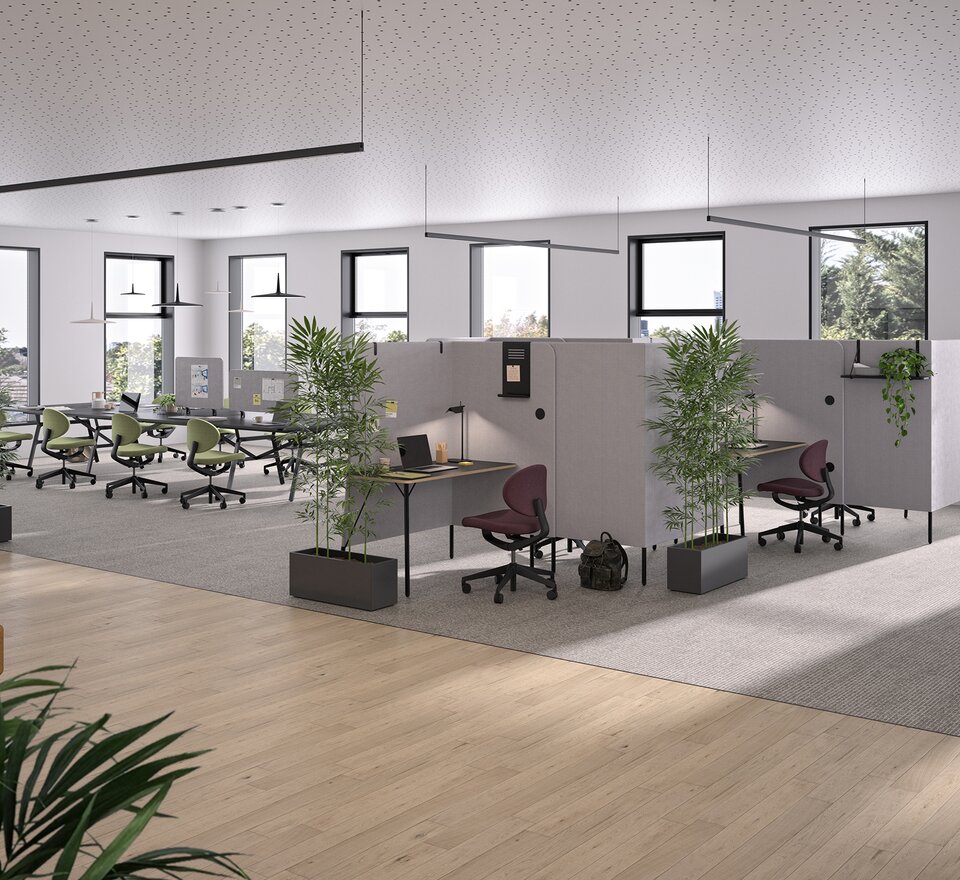What was once a traditional business centre is now a modern coworking space. More and more companies are following the trend and creating their own coworking landscapes within their offices.
Better together – coworking as a collaborative venture.
Coworking spaces originally came about as a modern and cost-effective alternative for freelancers and startups. They are places for people who don’t work together directly, but still want to take advantage of the synergies generated by a shared, inspiring workspace. Instead of working from home alone, several people come together in a working environment that encourages creativity. These spaces become the foundation of a community, and thereby play an important role in making people feel that they belong. Famous coworking spaces such as bluebird.space, the Impact Hubs and Broeinest are already implementing this concept.
Part of the hub – the concept of a coworking landscape.
But we are now starting to see a shift towards companies creating their own coworking spaces within their offices. While primarily intended for their employees, these can also be used as a workspace for external people such as crowdworkers and freelancers. Temporary project teams can use them as a creative workspace, remote workers can spend their often-sporadic office days in them, and working groups can use them for quick, spontaneous meetings.
In modern New Work offices, coworking landscapes are generally positioned in the public hub areas to facilitate collaboration and communication. Embedded in the open room concept of the hub zones, they offer spaces to take telephone and video calls in peace and quiet, or to focus on specific tasks. All workstations are hot desks and not assigned to any one person.
This gives coworking landscapes their highly flexible nature. Ideas tend to arise in an open and creative working environment, away from the employees’ traditional desks. Coworking landscapes are a creative zone for temporary working, informal meetings and different forms of discussion. Their more casual nature encourages collaboration and facilitates spontaneous brainstorming.
Flexible and creative – versatile furniture options.
There is plenty of freedom in design when it comes to these spaces: industrial style, club or living room, lounge, creative landscape or urban marketplace. The important thing is that coworking landscapes can be shifted around to create different working environments and provide a supportive ambience for the task at hand. This open concept requires acoustic measures to be taken, preferably through textile flooring and sound-absorbing materials on walls and ceilings, or as free-standing or suspended elements.
Furniture supports the versatile concept. Benches or islands that can be easily screened off can be used as desks and tables. Concentrated work, communication, coordination and temporary use can all be catered for conveniently without wasting space. As they will be used by a great number of different people, swivel chairs should ideally feature automatic weight detection to save wasting time manually adjusting them.
Conclusion: In a world in which flexibility and networking are becoming increasingly important, coworking landscapes are an exciting concept. They not only create space to work, but also for conversation, inspiration and innovation.

